Issue No.20 / December 16-31,2015
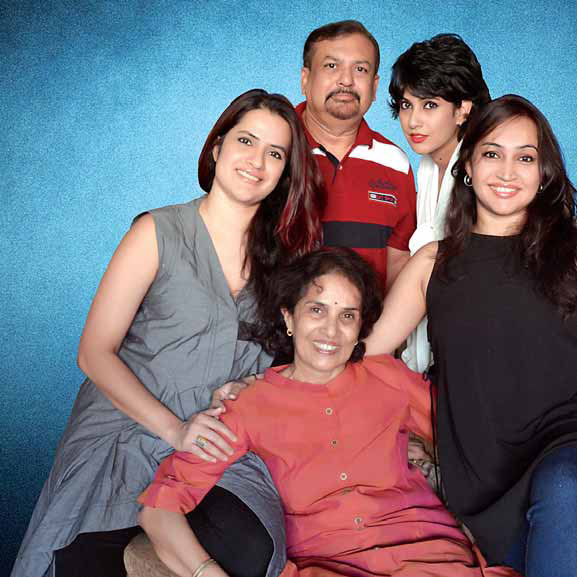
FROM THE ROBUST DISCIPLINE OF THE NAVY TO THE CHEQUERED MAZE OF THE CORPORATE, COMMODORE DILIP MOHAPATRA, VSM HAS NAVIGATED WITH APLOMB, APPLYING LESSONS LEARNT IN ONE FIELD TO OVERCOME AND RIDE OVER THE CHALLENGES OF ANOTHER. AND NOW IN THE THIRD INNINGS AS COACH, MENTOR AND POET, HE CARRIES IT OUT WITH EQUAL PANACHE AND ELAN.
Commodore Dilip Mohapatra is a poet at heart, which belies his tough exterior. With over two decades of action-packed experience as a Naval Officer and then another two decades as a top Corporate leader, Mohapatra skilfully brought to play sharp organizational skills learnt in the Navy to suit the corporate environment. He joined the Indian Navy as a commissioned officer and served for 28 years in various leadership capacities ashore and afloat. He rose to the rank of Commodore and in 2000 hung up his boots seeking premature retirement. He was decorated with the President’s Vishisht Seva Medal (VSM) in 1997, for distinguished service rendered. This medal is considered equivalent to the civilian National Award Padmashri.
He pursued a corporate career with the Tatas and the Suzlon group of companies in various leadership positions till 2011, and then decided to free himself from active professional life. He, however continues to contribute as a catalyst for organizational transformation on demand, and engages himself in high end coaching, mentoring and leadership training. He is currently the Chief Mentor and Strategic Advisor to KIIT School of Management, Bhubaneswar and acts as a catalyst for organizational transformation.
His poetic journey began way back in the seventies , inspired by his Physics professor Jayanta Mahapatra, who has carved a niche for himself as a renowned bilingual poet of national and international repute. A few of his earlier poems appeared in magazines like the good old illustrated Weekly of India, The Quest, The Mirror and The Grey Book, edited by Jayanta Mahapatra.
Compared against four factors-vulnerability, uncertainty, complexity, and ambiguity, the Navy and Corporate-both have similar challenges, but the exact contextual manifestations for both are different... the attitude to cope with that, or competence required to cope with that becomes different.
His engagement with the Navy however did not permit him to pursue his poetic interests with the fervour he started with, and he went into a sort of hibernation. However he continued to write professional articles for Defence Management and some HR & Leadership journals worldwide. He also edited a few in-house magazines for the Navy and the companies in which he served. From 2014, he reverted passionately to writing poetry, extensively published in many national and international literary journals of repute. So far, he has three poetry collections and a book on management thoughts, to his credit, published by Authorspress, New Delhi.
Corporate Citizen talks at length with the man who designed and deployed effective systems in the Navy as well as in the companies he worked for and made a mark, wherever he went.
Commodore Dilip Mohapatra: Well, it was a boyhood dream. I was attracted to the uniform when I joined the junior Air Force wing of the NCC in school. I also got selected for the Republic Day Contingent Parade at Delhi. Having seen the armed forces people proudly moving about in uniform at the parade, I thought about making a career in the armed forces. That was in 1964.
I joined the Armoured Corps NCC in Ravenshaw College, Cuttack, where I passed my B and C certificates. I had already done my A certificate in the junior wing in school. During my college NCC days, I had the opportunity to attend a naval camp in Bengaluru and it was then that I found the Navy most attractive amongst the three wings of the Armed Forces. However, at that point of time, I was thinking of pursuing an academic career as a professor with a PhD, while my father desired that I become an IAS officer. His was a typical Oriya dream. I lost my father when I was pursuing my graduation with Physics Honours. A veterinary surgeon, he rose to the position of a Joint Director of Animal Husbandry and Poultry Development. Later I did my Master’s in Physics.
I had to forgo my dream of pursuing my PhD as I was looking for an immediate placement in an honourable job after my MSc. I realised that if I opted to be a lecturer, I would get stagnated in Odisha. Narayan Mishra, one batch senior to me, who had joined the Navy, inspired me to toe his line. I went through the Services Selection Board (SSB), and got selected at the SSB, Roorkee in the first attempt. So it was partly by chance and partly by choice.
The first thing that struck me was the mindset of the command structure that we develop in the Armed Forces. In the defence forces, it is very rare that you would be serving under somebody who is junior to you by age and experience. Also, in the Navy, you don’t have a matrix organization. There is only one boss. What I had to overcome in the corporate world was how do I report to a chap who is 15 years younger than me? It was not a dilemma, but a hard realisation
Those days, the initial naval training was at Kochi. The nine week training consisted of an intensive orientation programme and initiation into various sub-disciplines of the Navy, aimed at complete transformation of the individual from the civvy street to become an officer and gentleman.
Thereafter, we were exposed to all the naval specialisations because we were all direct entry officers. Our training as direct entry officers went on for about 15 weeks. After that, we were put through on-the-job training. My first appointment was at the Vizag Boys’ Training Establishment. We started taking charge of divisions, young sailor recruits, while learning the ropes of the total rigmarole of the Navy.
Yes, it was exciting alright, but definitely different from the NCC training which was focussed on basics like drills and limited weapon training. Here, you have to learn about the entire naval organizational structure, the basics of how the Navy functions, from the headquarters down to the ships and establishments. You also learn the different disciplines in a ship; the role of a captain, the engineer officer, electrical officer, deck officers, leadership training, command and control of sailors. Also, a broad brush view of all the functional training of the Navy like gunnery, navigation, communication, torpedo, anti-submarine know how. There are different specialist schools in Cochin which taught us these varied aspects and thus we were exposed to various disciplines of the Navy. They also put us on sea training to understand how a ship works. Then they took us to the naval dockyard at Mumbai to get us to understand the maintenance of ships. But it was only an exposure, not in-depth training. Subsequently, we learn it on the job. And later on, with about four years of experience , by a stringent selection process, I got selected for Navigation-Direction specialist’s course, which comprises marine navigation and aircraft direction. In the Navy, training never ends; you are continually trained till you retire.
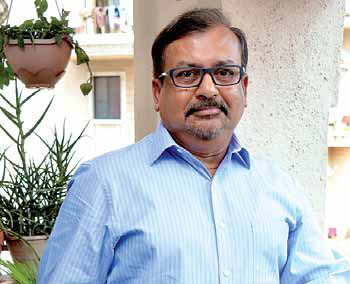
As a young naval officer, I remember, we underwent training for a kind of war exercise in Vizag in 1972. In that exercise, I was part of a team to assist the Operation Rooms officer. This was basically a harbour defence exercise. I was given the job to log the incoming signals and report them to the officer of the day. Now, a signal received said that Alert State 3 should be enhanced to State 1. So I went and reported to the Lieutenant. The usual process is that the states go up sequentially from 3 to 1 through 2 unless there is a real emergency. When State 1 is announced, a lot of action has to be initiated—lights are to be hoisted, sirens are to be sounded and so on. So that there is extra vigil and you look for mock divers coming and attacking the ships.
Suddenly, within 10 minutes, the Flag Officer Commanding-in-Chief Admiral Ronnie Pereira, (who later became Chief of the Naval Staff )- a terror to the juniors, very tall, handsome and with a stately disposition stormed into the Operations room and roared, “Who is the OOW (Officer of the Watch)?” The OOW, knowing he was going to get the firing, stood in a corner and I was the fall guy. I was a Sub-Lieutenant, a poor one-striper dwarfed by the imposing Admiral.
The Admiral quizzed, “What are you doing here?”
I said, “Sir, I am the Sub-Lieutenant of the watch.”
He said, “Alright, and who told you to take it to State 1?”
I should have kept quiet. As a Sub-Lieutenant, you are only supposed to be seen, not heard, that’s what they say. Instead, I pulled out that signal and showed it to the Admiral. He didn’t read it but threw it away and shouted, “You are supposed to be on State 2 and not State 1!”
I said, “Sir but...”
He snapped, “Are you a clerk, have you got gobar (cow dung) in your head? Who made you an officer?"
I tried to say something again but he cut me short and blasted me, left, right and centre, and told me to bring it down to State 2 and walked out. Now, after that, I didn’t know what to do. I was feeling very bad.
Then a senior Lieutenant came to me and said, “You fool! Why did you talk back to the Admiral? If you would have just quietly said, ‘I am sorry Sir’, he would have walked out.”
I said, “But he was talking to me, and I had to reply.” However, look at the magnanimity of the Admiral. The next morning, at 9 O’clock, I got a message from my CO that the Admiral wanted to see me. I was again scared, thinking something terrible had happened. He might tell me to go home. So I went and he said, “Son, I am sorry, it is not your mistake. I have checked up. The signal was wrongly decoded. And the signal operator had put 1 in place of 2. And you have the done the right thing because you acted on the signal as received.”
So I saluted him and thanked him and walked away.
That incident taught me that as a leader, your respect goes up if you own up to your mistake, even to your subordinate. He could have just forgotten about the whole thing as I was just a nobody at that time, and he was an Admiral. But the very fact that he called me to apologize to me the next day was a great lesson for me.
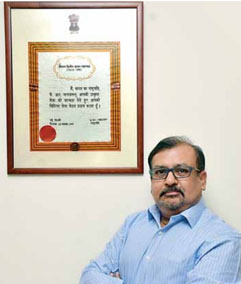
When I was posted in an inter-service organization, the College of Defence Management (CDM), to teach Management as a faculty, my specialisation was ‘Decision Analysis’. Under Decision Analysis, we had Statistics, Operations Research and Systems Analysis, and I am a Systems expert.
During those days, I found that although the Air Force and Army had a lot of case studies, there were practically negligible Naval case studies. So I took it upon me to work hard to design a large number of Systems case studies concerning the Navy, as applicable to practical submarine search situations or practical situations in air search by naval reconnaissance air-craft , choice of ships and naval equipment, fleet structuring and so on. For example, while selecting radars in the foreign markets, there were no clear-cut applicability scenarios. So I created, simulated, ran those cases and then based on those cases, created a system of actual methodology for the Navy for subsequent utilisation for the selection of weapon and sensor systems - something quite useful whenever we planned to select and buy things from abroad.
The value-add, which is not confined only to teaching but to real time applications was recognised by the Commandant of CDM, who thought that I deserved to be commended. So he recommended me for the VSM for my contribution to the inter-services organisation, basically as a Management faculty member, and especially for creating the new cases which had not existed until now, and which later found their use for the Navy.
IT industry is HR intensive. Profits of the company are solely driven by the conversion of human competencies into client deliverables. Unless the business units and HR professionals work hand in hand with complete understanding of each other’s profession and do the right procurements, business would grossly suffer. So I wanted to treat recruitment not as an HR function but as a business function
At that time, I was just about to join. That incident was unfortunate and somewhat demoralising for us. But the positive lesson that remains fresh in my mind till to date is the kind of leadership that Captain M N Mulla exhibited by standing steadfast on the bridge and barking orders to ensure that every junior officer and every sailor abandoned the ship first, while he himself put his own safety to the last. The ship was badly damaged and Captain Mulla went down with the ship. It was not only an act of valour and sacrifice, but the leader’s concern and responsibility for the safety of his subordinates first, even at the cost of one’s own life. Captain Mulla’s nobility, had been a great source of inspiration for us and he left an indelible impression in our minds.
No, if you ask me, it’s the other way around. The Indian Navy is the most glamorous of the three, although life on a ship or a submarine is not easy. Our shore stations are all metro cities. The naval officers get more opportunities to enjoy city life and when they sail out, they visit the best of places, mingle with the international crowd, international navies, and they have the best of the uniforms— and for your information, the Navy has got a total of ten types of uniform! We were made to believe that women go weak on their knees at the sight of the naval uniform!!
After 28 years of service I decided to shed my uniform. In the Armed Forces, this PMR (Premature Retirement) is a deliberate organisational intervention, which is encouraged because it keeps the Forces at a younger profile and creates better promotional opportunities for the juniors in an otherwise steep pyramidal structure. In 2000, I found that the chances of my becoming a Rear Admiral were very dim because there was hardly any chance for the next rank getting vacated in the normal course. I said to myself that I was only 50 years of age and could look for a second career outside; utilise my experience and expertise from all that I learnt in the Navy, and contribute to the country in another way, in another space.
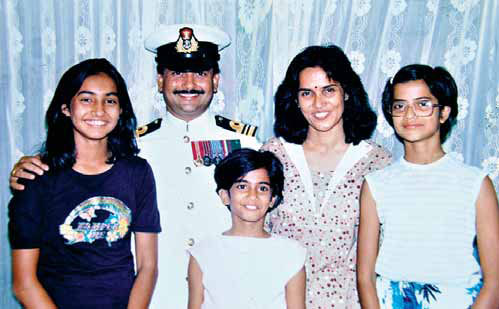
My decision no. 2 was to decide which company to join, and how to go about it. I found out that the IT sector was doing well. And as head of the IT department of the Naval Dockyard, Bombay I also had sufficient IT knowledge—so IT or OR (Operations Research, a term from systems analysis) were my strengths. IT, OR and HR could be a good combination for me to look for a job in an IT company like TCS. The first company that I explored for a possible absorption was Sierra Atlantic at Hyderabad. But I found that they wanted somebody who could implement PCMM (People Capability Maturity Model) in the company, that too, immediately, for which I did not have any practical experience at that time. So it didn’t work out.
My elder daughter suggested then that I try TCS, which was looking for heading their HR function at Hyderabad. So my CV was sent through a search firm and they called me for an inter- view. Meanwhile, I had made up my mind to seek PMR from the Navy and had started the process with the hope that I will get through TCS. Little risk with little confidence makes a heady combination. After three months, I got an appointment letter from TCS. I officially quit the Navy on April 30th, 2000. May 1st was Labour Day, and on May 2nd, I joined the TCS. That’s how I entered the corporate world-my first entry as Head, HR at Tata Consultancy Services, Hyderabad branch. In TCS, I worked till 2007.
When I joined, the male to female ratio in TCS and the industry per se, was very poor. There were only 12 percent women in TCS at that time. I set a target of taking it to at least 25 percent and in fact we achieved 31 percent in four years. And because of that decision, a lot of women employees got promoted with visible changes in TCS demography and its employment brand
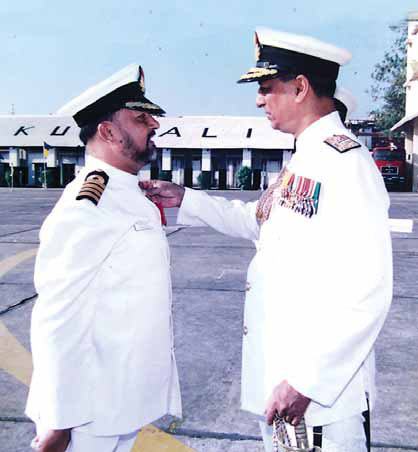
So the strategy I employed there was to prove I was a better professional than my predecessor. Here my empowerment would come through my own actions, through my demonstrated character, my decision making ability, and the value that I may add to the organisation, to earn my respect and build my credibility.
At TCS, after one year, I got an opportunity to do something both strategically and operationally and make a big difference. I was offered to head the recruitment function for the entire TCS as Global Head, HR Sourcing from the corporate office in Mumbai. I came to Mumbai to take up the new responsibility with no idea of the recruitment function especially in the IT industry. The total strength of TCS, in 2001, was only 14,000. When I took over, I was told that TCS was on an accelerated growing spree, and I would have to manage the massive recruitment drive for the next three to four years. But I didn’t have any clear-cut and detailed instructions.
Now I wanted total clarity for my function. Because if I didn’t get the right person for the right job at the right time, we would lose a huge amount of business. Any wrong or delayed decision would be counter-productive. IT industry is HR intensive and the core of the value chain remains human capability and human commitment. The prime raw material happens to be human resources. The profits of the company are solely driven by the conversion of human competencies into client deliverables. Unless the business units and HR professionals work hand in hand with complete understanding of each other’s profession and do the right procurements, business would grossly suffer. So I wanted to treat recruitment not as an HR function but as a business function and convinced the top leadership as such. I needed the support of my CEO to bring into the company a robust and scientific process driven strategy that encompasses inclusive recruitment plans intrinsically linked with the dynamics of business and is based on accurate demand and availability forecasting. And I got the full support of my CEO to go ahead.
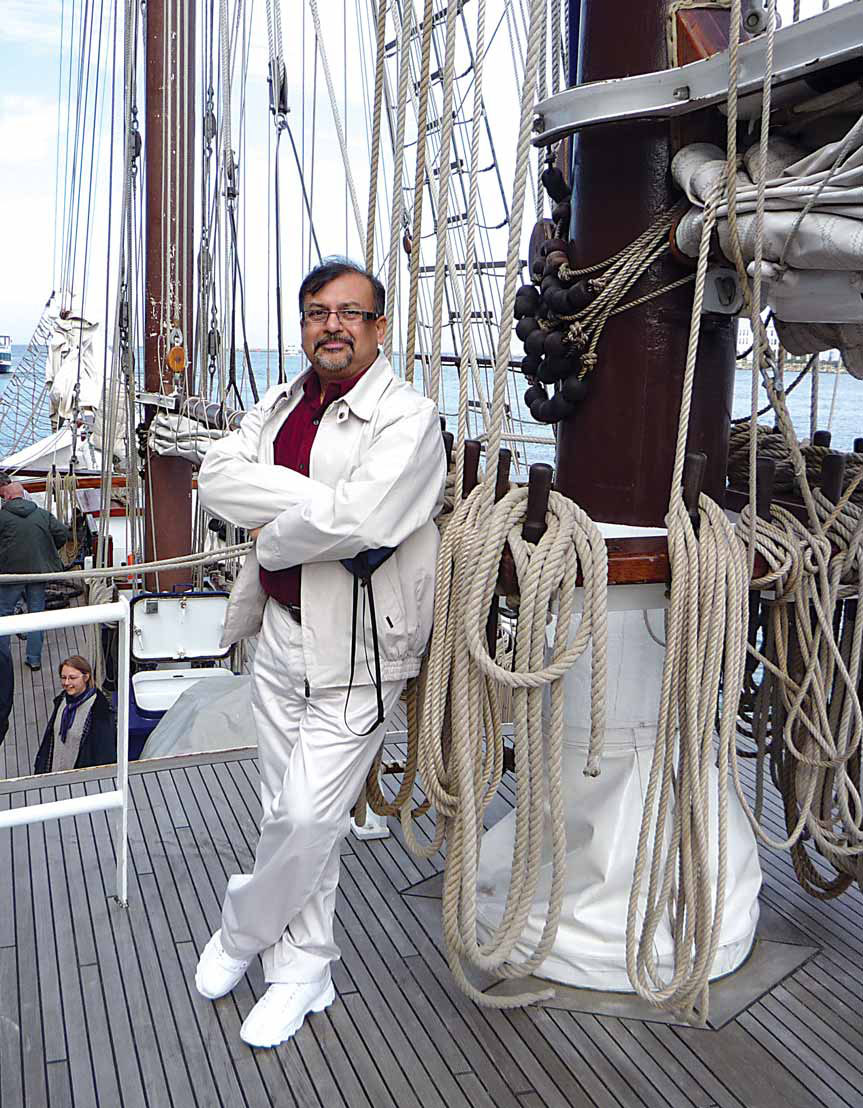
Our strategies were put into practice effectively in a very systematic way. Systems-thinking and IT applications that I learnt in the Navy was in fact very useful for bringing in processes and in digitising the same for recruitment at TCS.
Once the portal was created, the volume was easy to handle all around the country, and globally as well, like in the United States and elsewhere outside, wherever we have to take non-Indians. We kept on improving the system; it took about a year, and today this e-recruitment portal, which was pioneered by my function, is being sold as a tool by TCS to other clients. And TCS was the first-ever IT company to have an e-recruitment portal of its own.
I was teaching manpower planning at the College of Defence Management, so I had the knowledge of the techniques of manpower planning, forecasting methods for demand and availability and matching them together dynamically for complex organisations. Now after the main strategy was on an even keel, I employed other tactical measures. I understood that HR Sourcing in the IT industry was fighting and winning the Talent War and one has to be relentless in achieving the targets.
Let me give one example: I called one of my sourcing strategies as ‘Stinger’ named after a missile of the same name. A Stinger is a missile that selects a small, a point target from a larger area. I found that whenever we do experience professional hiring, we have to churn a lot of unsolicited and inappropriate resumes. Out of 100 recruits, our hit was only two or three.
Just imagine, at a success rate of only 2% or 3%, how much of effort gets wasted!
So under the ‘Stinger missile’ concept, I used to tell my smart colleague who worked directly under me to identify a good group or project leader kind of a guy working in another company and who could be prospective candidate for us. We would offer him an attractive package, and he would agree to join us, under the condition that if he had 20 people reporting to him, then it was his job to get us his entire team. Even if we got 10 or 15 out of the 20, that would save us a lot in terms of time and effort.
I called, one of my sourcing strategies as ‘Stinger’ named after a missile of the same name. A Stinger is a missile that selects a small, a point target from a larger area. So under the ‘Stinger missile’ concept, I used to tell my smart colleague to identify a good group or project leader working in another company. If he joins us, it is under the condition that if he had 20 people reporting to him, then it was his job to get us his entire team
When I took over as the head of recruitment, I found that the male to female ratio, in TCS and the industry per se, was very poor. There were only 12 percent women in TCS at that time. I set a target of taking it to at least 25% and in fact we achieved 31% in four years. And because of that decision, a lot of women employees got promoted with visible changes in TCS demography and its employment brand.
Besides e-recruitment portal and use of technology, I introduced and revised different strategies like better management of referral cases, which I changed to a ‘buddy’ scheme. We put up a poster from the film Sholay on everybody’s computer that said, ye dosti hum nahin chhodenge.In that, I said, get me three possible candidates; if selected, for each candidate, I will pay you the compensation I was paying to the placement agencies. That proved quite cost-effective.
With all strategies in place, we could increase our strength from 14,000 to 1,35,000 in four years, almost 10-fold.
Also, as a leader, I groomed my successor to grow up and take up my job. In the armed forces, grooming up your next leader is the responsibility of a leader. So I brought it here too.
When Officers retire from the Armed Forces and take up a job in civil life, they don’t know how to negotiate a salary. The same thing happened to me when I joined TCS. They offered me a package that sounded very satisfying to me when I compared that to my last take-home-salary in the Navy. I did not have any idea of what CTC (cost to company) was. I did not factor in the perks that I used to get in the Navy as a Commodore and hence my comparisons were like comparing apples with oranges. In reality, I started with a salary much lower than that of my counterparts in the company. It’s another thing that as I grew in my career at TCS, the anomalies were corrected and my salary was at par with my counterparts as a Vice President.
When I left TCS and went to other organisations, I was always given the package that I deserved.
We took about six months to design an e-recruitment portal. Once the portal was created, the volume was easy to handle all around the country,and globally. We kept on improving the system, it took about a year, and today this e-recruitment portal, which was pioneered by my function, is being sold as a tool by TCS to other clients. And TCS was the first-ever IT company to have an e-recruitment portal of its own
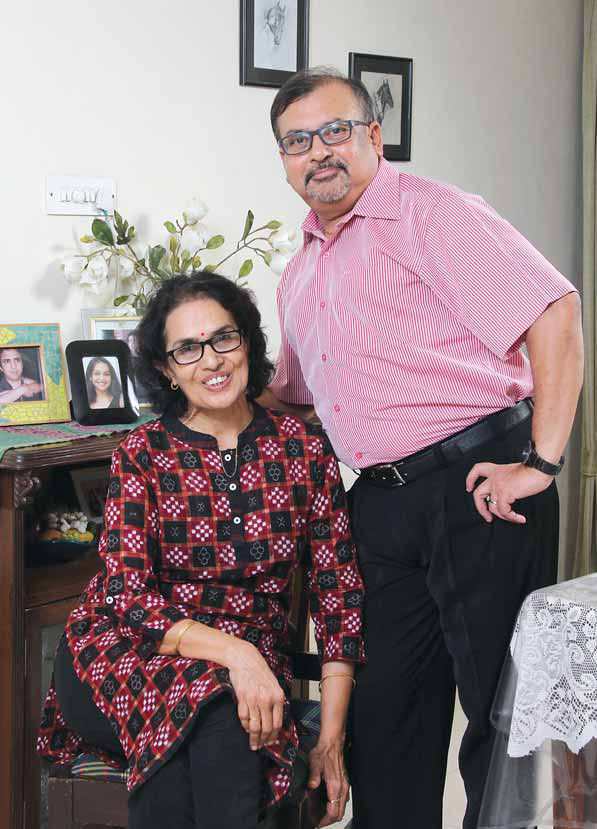
Then I learnt that at the Tata Management Training Centre (TMTC), Pune, which takes care of senior leadership training for the Tata Group of companies- a total of 93 companies-the position of Director was vacant. So I approached the Tata Group HR head. He agreed and with TCS’s consent, I took over as Group Vice President and Director of Tata Management Training Centre. It was an internal, inter-depart- mental transfer, from TCS to Tata Group, hence it was not really leaving the organisation. I was there for exactly one year. I brought about few changes to TAS (Tata Administrative Services) training, I opened up certain new vistas of leadership and functional training for the group companies. I improved, almost doubled the revenue of the TMTC, with reduced staff in one year. But then I decided to quit because I found little scope for any radical and episodic changes in this well set and traditional organisation. That was in 2008.
After that, there was a requirement by the Suzlon group of companies. They were looking for somebody who could start something for them like the TMTC. So I joined the group and established the Suzlon Excellence Academy (SEA)—it is opposite Magarpatta, at the Suzlon headquarters, One Earth, Pune.
After working for Suzlon for the next four years, one day I decided to give myself retirement—to do something I had never done—writing books, books, doing some consulting and coaching work, and not to do a nine-to-five job.
So in December 2011, I left Suzlon and from then onwards, I have been on the Board of Studies and Advisory Boards of the KIIT Group of institutes at Bhubaneswar. I hold the position of Chief Mentor and Strategic Advisor, on an honorary basis and drive some value adding interventions.
As for young naval officers, the naval culture is very much embedded into their blood -- that of being an officer and gentleman, which is more or less universal. There is a similarity between a naval officer in India, UK or Japan. In the corporate sector, although there is a common thread of their being corporate citizens, there is a lot of difference in the nature of the companies they are serving in. For example, an IT professional will have a different attitude and temperament than the one from the manufacturing industry.
And discipline is much higher in the armed forces. In the corporate, it is more client-and profit-centric. And there is an organizational difference from company to company. Their ethics are also different. Sometimes, theoretically, they propound very good values, but the question is, do they really practise the values? The answer is, not always. In fact, sometimes they don’t even remember those values; forget about applying them. So one of the challenges for me was, how do I really train people in practising those values which the company claims to espouse?
We don’t have these kind of problems in the defence forces because it is the basic foundation there and everybody knows that. A certain degree of flexibility that is there in the corporate may be useful to them because they are in a peculiar environment, not quite similar to the defence forces. Compared against four factors—vulnerability, uncertainty, complexity, and ambiguity, the Navy and corporate—both have similar challenges, but the exact contextual manifestations for both are different. And since the natures of these entities are different, the attitude to cope with that, or competence required to cope with that becomes different. So as an HR person, if you are taking care of training and development, or the recruitment, etc., you have to understand these differences and accordingly create the strategies and operations to suit to the environment and contexts.
First of all, assess how many more productive years you have ahead of you. Are you looking for a second career or trying to find a second engagement just to keep you occupied and earn some money to supplement your pension? If it’s for a second career, assess your strengths in relation to the chosen field in the corporate world and ensure that there is a good match. Then select the right industry sector and company that would give you ample scope to contribute and grow. Never undersell or oversell yourself. Learn how to make the right resume and approach the right search firms to facilitate your positioning. Never settle for anything less than you deserve. Learn the survival techniques like adaptability, flexibility, develop quick learning ability, understand the environment and free yourself from a rigid hierarchical, command & control mindset. Last but not the least, learn how to translate your capabilities and attitudes to a corporate environment and contextualise. Your success will depend on what value you bring to the new organisation.
The Navy taught me that, to get success, you got to Float, Move and Fight. I translated these three stages into a five stage strategy for corporate success.
These are : Survive, Drive, Strive, Thrive and Arrive.
First, you must adapt to the environment, know the organization and learn the tricks to Survive.
Then you got to gather momentum, deliver quality and move. That is Drive. Then you got to accelerate, that is Strive and be ahead of others;
Then you got to Thrive, showing excellence in multiple directions and add value to the organization in multiple dimensions.
Then you Arrive.
And again the cycle repeats to take you to the next plane.
My real journey started in 2014 after my retirement. I wrote very prolifically during the last two years and contributed to many literary journals world-wide. When some of them were accepted and published I was encouraged to write more. During these two years I have three books of Poetry published by Authors press, New Delhi. My poems have also appeared in the World Poetry Yearbooks 2013 and 2014 along with the works of many contemporary international poets of repute.
Discipline is much higher in the armed forces. In the corporate, it is more client-and profit-centric. And there is an organizational difference from company to company. Their ethics are also different. Sometimes, theoretically, they propound very good values, but the question is, do they really practise them?
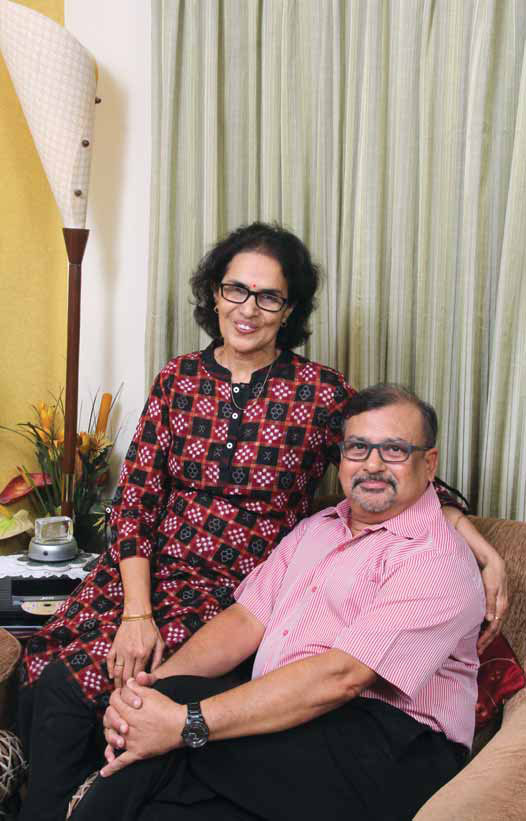
Nayantara is the quiet one; she has been the pillar of the family – seeing her husband, Commodore Dilip Mohapatra rise to great heights from the Navy to the corporate world and instrumental in inspiring her three daughters – Madhumita, Sona and Pratichee to blossom in their professional careers and become singing sensations. Commodore Mohapatra defines a successful marriage in three words – Affection, Respect, Trust (ART). A take on their concept of a successful marriage.
They say opposites attract, and with Nayantara and Commodore Dilip Mohapatra, it is starkly evident. She coyly and in very plain terms, tells you that it was a love-cum-arranged marriage and narrates, ``we were pursuing graduation in Physics in Ravenshaw College in Cuttack. He was one year senior to me. After that he joined the Navy and I finished my studies. During the college days, although he was more expressive about his feelings about me, I was quite shy and we hardly talked to each other at that time. After my graduation, I shifted to Bhubaneswar to do my Post-Graduation in Physics. Then he proposed and my parents accepted. We got married in 1973.’’ So, simply said and with lucid straightforwardness.
Commodore Dilip is more vocal about the birth of their love relationship when he elaborates, ``yes, we were in the same Physics department; she was one year junior to me and the similarity ends there.One of the laws of Physics is that opposites attract, which is so true; it is her quiet and calm nature that attracted me towards her. In sharp contrast, I am rather outspoken and flamboyant. On the other hand, if you ask her a question, her answers will be in monosyllables. While I would flaunt my clothes and ties borrowed from my father, she exuded simplicity.
Incidentally, it was a box camera, during a college picnic that triggered off the romance. Dilip reminisces, ``though I used to see her every day, I really noticed her first, during a department picnic. She was carrying a camera and on the insistence of the girl students of my class who wanted me to click their group photo, I borrowed it from her. The reel was wrongly loaded and I had to cover it under my jacket to reload it. So, you can say my first interaction was through the lens of the camera!’’
However, he was hesitant to propose, as he was not too sure whether she would accept. He says honestly, ``I took some time to propose as I did have a non-conservative reputation at college, due to my familiarity and ways with the opposite gender. She was a bit cautious and hesitant to talk to me. So it took me some time to approach her and she didn’t immediately say yes to me. But the only positive indication that I got was when I was hospitalised for a minor surgery and she visited me there with a friend of hers and with a packet of grapes. I took that as an indication of her interest in me, but she never expressed it in words. So, the grapes after all didn’t turn out to be sour, but sweet, as they are meant to be!’’
What is it that attracted her to him? ``He is quite an open-minded and diligent person and was good at studies. He started writing to me only when he joined the Navy. By the time, of course, he had met my parents and won their consent."
What is the role that she has played in his life? Says Dilip, ``She has played a very pivotal role in my achievements and success. She was always there, providing complete support, never questioning my decisions, not because of fear but because of her faith in me. She stood by me all the time, be it my decision to retire from the Navy to enter the corporate world, or to leave active professional life before time.
`Secondly, her contribution in bringing up our children is immense. She took complete responsibility of their education, leaving me free to pursue my career. She also willingly accepted all familial responsibilities esp. taking care of my aged mother.
Their three daughters, Sona, Madhumita and Pratichee are as gorgeous as much as they are brilliant in academics and singing. All of them are well-acclaimed singers. Sona is married to music director Ram Sampath and as her mom proudly says, ``she has a voice of a Sufi singer; she goes into a trance when she sings.’’ Anyone who has heard her song `Rupaiya’ in Aamir Khan’s SatymevaJayate TV serial, or the Punjabi folk song Ambarsariya, amongst scores of others she has sung, would surely agree. Pratichee was one of the five Viva girls, India’s first ever all-girls Pop music group.
When asked how come music is an integral part of the family, says Dilip proudly ``both, me and my wife are fond of music. My daughters started learning Hindustani vocal music at an early age and are trained classical singers under Gandharva Mahavidyalaya. Though they pursued their higher education to be professionals, they continued their musical journey on the side and excelled in many competitions. While Sona and Pratichee finally changed track to become performing artistes in entertainment industry, Madhumita still pursues her professional career in IT industry but keeps her interests alive. Sona was nominated for Filmfare Awards for playback singing in Hindi Movie Khoobsurat. Madhumita sings for Telugu movies occasionally and was nominated for Filmfare Awards for playback singing in South Indian Films in 2008.’’
Adds Nayantara, ``honestly speaking, like any other middle-class family, I thought my children should excel in studies and become successful professionals. And for that, I should not let my career coming in the way, which is why did not pursue it. I chose to devote my entire time to them. My daughters too responded well to it by doing well in their studies as well as in their chosen fields. I always wanted them to pursue a hobby and be achievers."
I wouldn’t use the word ‘love’ because that word is very fuzzy—misinterpreted and reinterpreted by people in many ways. I am being very, very focused, so I would say the ART of marriage, lies in three words, A for affection, R for respect and T for trust
What role did they play in the upbringing of daughters? Says Dilip, ``we wanted them to grow naturally with us. We didn’t want to impose anything on them. They being girls, we were sometimes a bit protective and had some restrictions as concerned parents—the kind of company they keep, the routine and discipline they maintain, which was for their own good. Within that, they had the freedom to do what they liked. In education or career, we gave them freedom to pursue as per their wish. We expected them to be responsible for their own actions. We also told them: never compromise your dignity for anything in life; never keep quiet if you are right - fight for your right; don’t get intimidated just because you are a girl.So this self-confidence we instilled in them from the very start.
What is it that keeps a marriage going? Says Dilip, ``First and foremost, it is, understanding a relationship; understanding your respective responsibilities, mutual respect, mutual trust, and affection. I wouldn’t use the word ‘love’ because that word is very fuzzy—misinterpreted and reinterpreted by people in many ways. I am being very, very focused, so I would say the ART of marriage, lies in three words, A for affection, R for respect and T for trust.’’
He also believes that, like any relationship, marriage also works on understanding the touch points that are necessary to keep your marriage together. He elaborates, ``Touch points are like a glue that keeps things stick together. After a few years of marriage—initially you have plenty of touch points, like doing so many things together—later on you tend to drift apart,due to your progressing career, or your increasing responsibilities as a mother, a wife, or perhaps due to family or societal pressures. So even without realising, your touch points start getting diminished. If you don’t endeavour to renew these or create new touch points, then your relationship can drift apart. For example, at our age we may not like to go for a movie together every other day, but we may go to a spiritual discourse or a poetry session together these could be new touch points. So my advice is take stock of your touch points periodically, don’t allow old touch points to completely vanish from your life. Renew them in intervals, if necessary, create new touch points, with your partner. And these touch points are the real glue. If you maintain and nurture these touch points, you will never be separated."
Adds Nayantara demurely, `` nowadays, youngsters never think about compromise, adjustment and sacrifice. Commitment and adjustment are very important in marriage and it perhaps rests more on the woman’s shoulder. Also, young couples or parents today are too stressed; they worry too much about the future, for which they lose their peace of mind in the present. We never worried about materialistic things. I feel, what the young couples are missing is a sense of contentment, patience and also an ability to live in the present moment.’’
She further adds, ``since young men and women are more forthright about their needs and also the financial independence that they want, there should be more discussion between them about their expectations about each other. That will make their life better.’’
Indeed for the Mohapatra family, Life is a Song, as harmony and peace dwell in it.
BY VINITA DESHMUKH